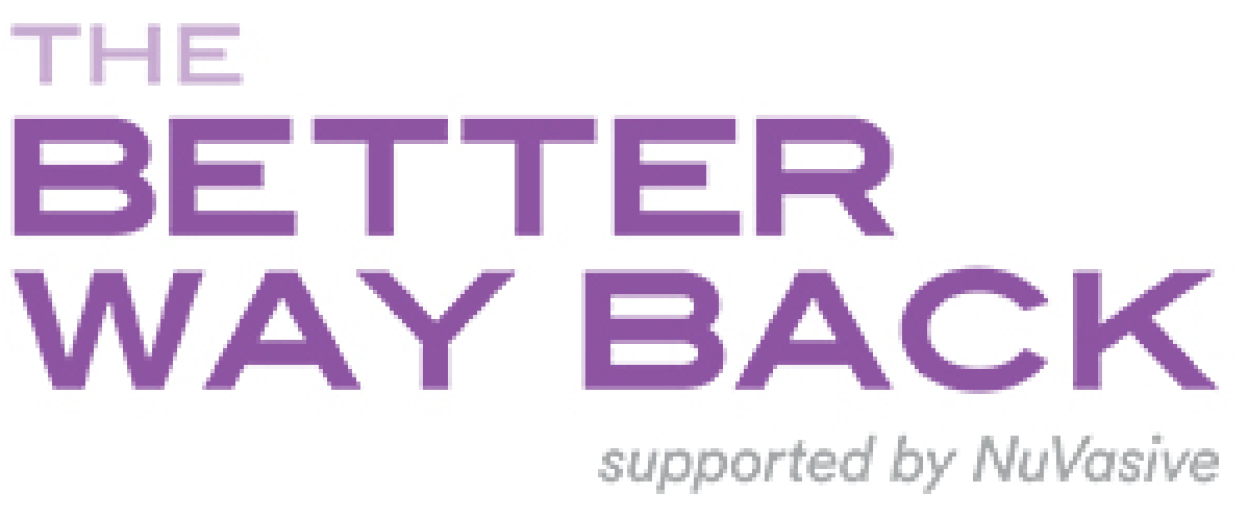This is the third in a series of guest posts by Jim Spell, The Better Way Back® Patient Ambassador. Check out part 1 and part 2.
My name is Jim Spell. I recently had a full lumbar fusion. I am now the proud owner of 18 screws and two rods totaling over two feet. My doctor compares it, with fondness and pride, to the Golden Gate Bridge. While I probably wouldn’t have found this metaphor as funny four months ago, my sense of humor is returning, along with my overall health.
The pain
While the pain killers gave me a false sense of comfort, my body knew I was in pain and reminded my mind as often as it could. I learned to respect the communications between the two as I began to increase my movements, but weeks on the tiny white pills were beginning to affect my overall recovery.
The Oxycodone was the time release pain medication, while the Oxytocin was what I affectionately called the “spikers.” Two taken every three or four hours kept me stable, but it was becoming apparent that they were taking their toll. My mind was slowly disconnecting from my body and as grateful as I know my body must have been, it did not convey the gratitude to my mind as I gradually grew darker in my thoughts.
Going into week four I knew something had to be done. As a writer, I had written all of three sentences since coming home. And while the writing of these three sentences only took an hour, their editing took days. Although I knew I was simply a patient in need of help, the word addict began creeping into my thoughts.
My drug-free plan was simple: I would quit the “spikers” first and then the time-release medication. On April 7, 2013, I went cold turkey, relying on two 10mg Oxycodone for 24 hours. After a few days of physical discomfort, I found myself wonderfully lucid and seemingly “out of the fog.” I was elated. I began to move more. I tried sitting up for longer periods and while I could not do anything in particular, I prided myself on simply standing in front of work to be done. There was a joy in the potential and for the first time since the surgery I began to feel like the healing of my body was entering the plus column.
It wasn’t until a week later that I gave up the time-release medication, again cold turkey. While I had been counseled on gradually going off the pain medication, I knew my personality well enough to know that, like smoking, only a complete separation would work, 180 degrees in the opposite direction.
And it worked, at least for three days. For three days I didn’t feel any different. I went about my business, began sitting up to eat and regular walks seemed absolutely reasonable. But on the fourth day, everything changed. I lay down to go to bed and I felt like I was drowning. I sat up and gasped for air, quieting my body as best as I could. This would last for consecutive nights, ending with me finally falling into sleep for a few hours at a time. Then it would start again. While the days were not spent “under water” I could not connect the dots—that is, I could not logically move from A to B and from B to C. There was some sort of mental disconnect that was even worse than the fog of medication.
For the first time I began to worry. Was I an addict? Was my mind going away? And to make matters worse, not only was I experiencing increased back pain, but my legs were beginning to hurt as well. This reality clearly sucked. I had to call the surgical center and get some answers. Maybe rehab with some well-meaning prisoners. Or an addiction ward where I could be with my own kind.
As it turned out, while these were definitely the first signs of a physiological addiction, they were also perfectly normal for the length of time and severity of pain I had experienced; withdrawal would take another week if I chose to continue cold turkey. Otherwise I could withdraw gradually as previously discussed. It was the three days without withdrawal symptoms that determined the built-up levels in my body and the subsequent severity of my withdrawal process. My mind, such as it was, was fine, demonstrating no ill effects of either the drugs or the withdrawal.
I felt better immediately. Heck, I wasn’t going to waste the four days of suffering I endured before I called. I would just get through the week and by next Sunday it would be better. I did and it did, but not without some serious insight and soul searching. By Sunday I was writing again, sitting up for longer periods and walking every day. While the “discomfort” was very real now, and extremely pervasive in everything I did, it was up to me and me alone to control it. No more help from the little white pills.
Check back next week for “Jim Spell’s story part 4: exercise.”
13-NUVA-1265
